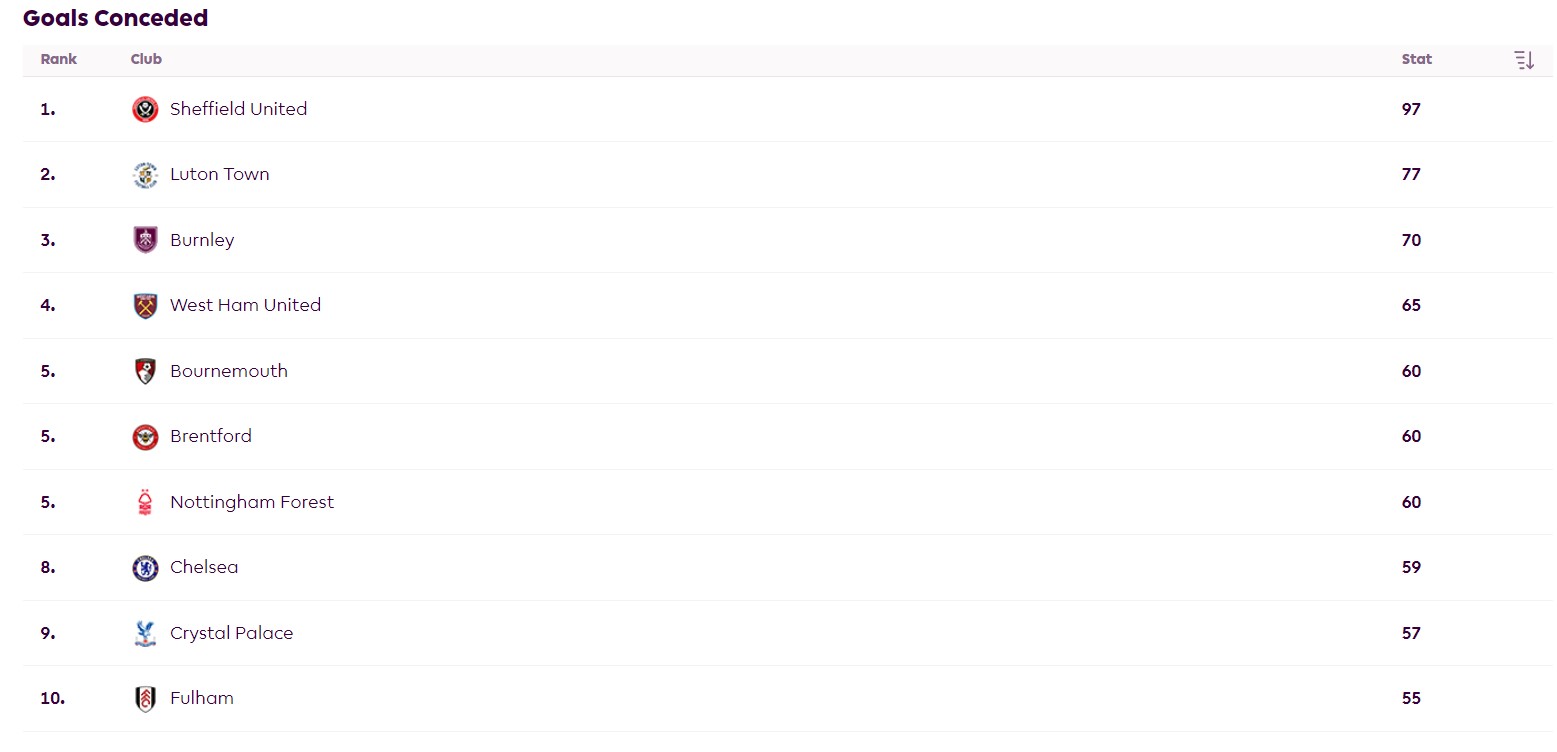Chelsea manager Mauricio Pochettino has had experience in the Premier League, La Liga, Ligue 1 and the UEFA Champions League.
His managerial career started in 2009 when he coached RCD Espanyol. He moved to the Premier League in 2013 where he coached Southampton for half of the 2012/13 season. For the 2014/15 season, he moved to Tottenham. After a few seasons in London, Pochettino was sacked and found his way to Paris, as head coach of Paris Saint-Germain, replacing Thomas Tuchel mid-season.
Pochettino is now back in London, this time as Chelsea manager, about to complete his first season as head coach at the Bridge.
Early Career
At Espanyol, Southampton and Spurs, he instilled an attacking philosophy characterized by quick offensive transitions from defence to attack, and an emphasis on maintaining positional structure. These teams often played in a 4-2-3-1 or 4-3-3 while attacking, and defended in a 4-4-2 or a 4-1-4-1.
Pochettino’s preference was to start the build-up from the goalkeeper and the centre-backs. In this scenario, the centre-backs drop to either side of the goalkeeper to create passing options. Meanwhile, the defensive midfielders position themselves to form triangles around members of the opposition’s front line, allowing the team to work the ball forward in an organized and controlled manner.
There was also a heavy reliance on the fullbacks to contribute to the team’s attacking play. At Southampton, he set a back-four system, whereas at Spurs, he occasionally deployed wing-backs ahead of a back-three. Regardless of the system, the fullbacks or wing-backs provided width to the team’s attacks which helped stretch opponents’ defences and created overloads in dangerous positions. The advanced positions of the fullbacks allowed supporting forwards to get close to the lone striker, creating a cohesive attacking unit.
Harry Kane in particular was a player that blossomed under Pochettino. His growth included improved passing ability and a willingness to drop deeper to link play with teammates. By doing so, he created space for quick players to make runs beyond him, thereby maintaining a transitional threat even when Spurs were dominant in possession. At Southampton, Rickie Lambert played a similar role to Kane under Pochettino.

At Spurs, Son Heung-min often drifted infield to join in the buildup play or attacking movements as the number. This made him an asset to Tottenham as he acted as a secondary play-maker or a goal-scoring striker. The wide player occupying the side of the field opposite to where Son would drift infield – often Dele Alli or Christian Eriksen – also moved infield to create central overloads, leaving space for the fullbacks to exploit out wide.
In Paris With the World’s Best
At PSG, Pochettino often used a 4-2-3-1 or 4-3-3 but sometimes experimented with a 4-4-2. Overlapping fullbacks provided width in the attack, while attackers like Kylian Mbappé and Neymar were tasked with attacking infield, rather than staying wide.
When Neymar played on the left, he tended to drift almost permanently into the inside left channel to receive the ball, allowing him to influence the game from central areas. If Mbappé played on the left, his movements were similar to Son’s role mentioned earlier. Midfielders were to look for Mbappé’s direct runs following attacking transitions, especially after regaining possession in the attacking half.
Against well-organized defensive teams, Mbappé had to vary his movements cleverly, PSG relying on individual brilliance to make something meaningful of their attack. It was down to the Frenchman to perfectly coordinate his movements with the brilliant passes from the midfielders.
When Lionel Messi joined PSG in the summer of 2021, Pochettino would play him behind Mbappé in the number 10 position. Ángel Di María would play on the right wing, and Neymar on the left, under a 4-2-3-1 formation. Against tougher opponents, however, Di María would be dropped out, with Messi moving to the right, Mbappé to the left, and Neymar would play as the central striker in a 4-3-3 formation.
However, the three stars would consistently rotate and change positions throughout matches. Messi and Neymar were particularly prone to dropping deeper to collect the ball and initiate attacks, while Mbappé remained a constant threat with his pace and runs in behind the opposition’s defence.
Despite the attacking prowess of Neymar, Mbappé and Messi, Pochettino had some challenges managing the team, particularly in terms of their defensive organization and pressing intensity. While elements of the Argentine’s tactical influence were evident in the team’s narrow shape and the use of over-lapping fullbacks to provide width in attack, issues arose when the team lost possession.
The front three were sometimes unable to press with the intensity Pochettino demanded, which left PSG vulnerable defensively, especially against opponents who were able to exploit spaces left behind by the high attacking line. They would often struggle against deep blocks.
Emphasis on Pressing
In his early teams, the Argentine made quite the impression. Pochettino was – and still is – known for his emphasis on pressing opposition teams high and creating chances in transition. This is something that he has carried to each team he has coached.
His early teams were known for their intense pressing high up the pitch. They would apply pressure on the opposition as soon as they lost possession, aiming to win the ball quickly and disrupt the opponents’ buildup play before they advanced into dangerous areas.
Pochettino’s teams adopt a proactive approach to restarts, such as goal-kicks. They press the opposition’s centre-backs aggressively to disrupt their buildup play from the back and potentially force errors or turnovers in possession. That is the reason that to date, he likes to play attackers who are capable of handling many short and intense bursts.
In the 2018/19 season, Tottenham’s run to the UEFA Champions League final was based on Pochettino organizing a shape in a mid-block, in which the priority was blocking off passing lanes in the centre of the pitch and forcing play wide. His PSG side possessed a similar defence to that Spurs team, although, in domestic competitions, the high press was often the favoured approach.
In 2020/21, PSG’s front three pressed aggressively with support from the defensive midfielders. Meanwhile, the fullbacks stepped out to take on their direct opponents as the central defenders held an aggressive high defensive line.
When Messi joined PSG, it became difficult for Pochettino to use his preferred high press. The more common approach his team used was to engage their opponents when play reached the midfield. However, they still did look like a team coached by Pochettino when there was an opportunity to win the ball and they did press.
What was unfortunate for the PSG was that they had challenges when facing opponents who were skilled at maintaining possession and progressing the ball methodically from their own defensive areas, despite limited pressure from the opposing team. These opponents may not necessarily sit back with a deep defensive block, but rather excel in ball retention and controlled ball play. This can pose challenges for pressing-oriented teams like those coached by Pochettino.
The French team looked more comfortable whenever they played with a mid-block. The front three would stay narrow in the mid-block. By staying compact, they screened passes into the central midfield, making it difficult for the opposition to play through the centre of the pitch. The midfield three positioned slightly deeper behind the front three would remain prepared to move out and press the opposition’s wide midfielders. Mbappé would be the highest of the front three, attacking the space ahead whenever the ball was won.
The Fall of London’s Bridge
Pochettino joined Chelsea just in time for their preseason campaign. The Argentine received praise for a successful campaign where Chelsea were unbeaten and looked promising.
During preseason, he used his preferred setup, but when the Premier League season began, he switched to a 3-4-2-1m which did not work out well for the Blues. In the first three games, with the 3-4-2-1 formation, Chelsea did not look as strong as they did in preseason and only managed one win. The fourth game of their season was an EFL Cup game. Pochettino switched back to a 4-2-3-1, and Chelsea won the game. However, in the following game – again a Premier League game – he chose the 3-4-2-1 formation again and lost to Nottingham Forest.
From then on, Pochettino mostly used the 4-2-3-1 which proved to be more effective. However, some Chelsea players often started in unnatural positions. For context, Levi Colwill who is a great centre-back was often played as a left-back. Meanwhile, Enzo Fernández who flourishes as a deep play-maker was often played as a number 10 in the early part of the season.
The addition of Cole Palmer to the Chelsea squad was a positive, as Enzo was able to drop down deeper. However, for a while, despite the availability of natural fullbacks, Pochettino would continue to play centre-backs as fullbacks. A plethora of injuries soon followed, limiting the Argentinian coach’s choices.
As of now, Chelsea has more than 10 first-team players injured, which has further complicated things for the manager. In-game management is another issue at Chelsea currently. More often times than not, substitutions have taken away more from the team than they’ve added. It is why many times this season, Chelsea’s second-half performances have been poor.

As Pochettino is a manager whose main focus appears to be on high pressing, out-of-possession and transitional play, it has proven to be one of Chelsea’s biggest issues this season. Notably, Conor Gallagher is a player that has thrived in this environment, as leans on his strengths. Palmer has also thrived under this system, the same way Mbappé’s brilliance allowed him to shine under Pochettino. Chelsea struggles against teams with a deep block. Also, over the years, more and more Premier League teams have become good at finding a way to play through even the best out-of-possession systems.
As the Premier League 2023/24 season nears the end, Pochettino has had a change of tactics that have positively transformed Chelsea’s season. With the 4-2-3-1 formation, in possession, the shape has been a 3-2-2-3, and a back to a back four when out of possession.
Marc Cucurella has been playing as an inverted left back, and this has proven to work in favour of the Blues. Glimpses of the positive change were seen in Chelsea’s recent games, with 3 wins in 4 games. At Aston Villa, after trailing 2-0 by the end of the first half, Chelsea had a great comeback, seemingly taking on a similar shape to their pre-season campaign. The game ended 2-2.
Against Tottenham, Chelsea enjoyed a 2-0 victory. In their game against West Ham United, the Blues also managed an easy win. They were dominant in every area and enjoyed a dominant 5-0 win at home. Despite struggling against Nottingham Forest, the Blues managed a 3-2 win. A good performance away at the AmEx has also gotten them that much closer to UEFA Europa League qualification.
It has been a rollercoaster of a season for Chelsea, with a number of great performances marred by poor play and inconsistency. As a result, there are doubts over Pochettino’s future at the Bridge. Pochettino however, is on a two-year contract, with a club option of a further year.
The Todd Boehly era is more patient with managers than the Roman Abramovich era, and therefore, it would not be a surprise if Pochettino is still the head coach of Chelsea next season, despite popular opinion. The recent upturn in results and performances, however, could just be what keeps Pochettino at the Bridge.




